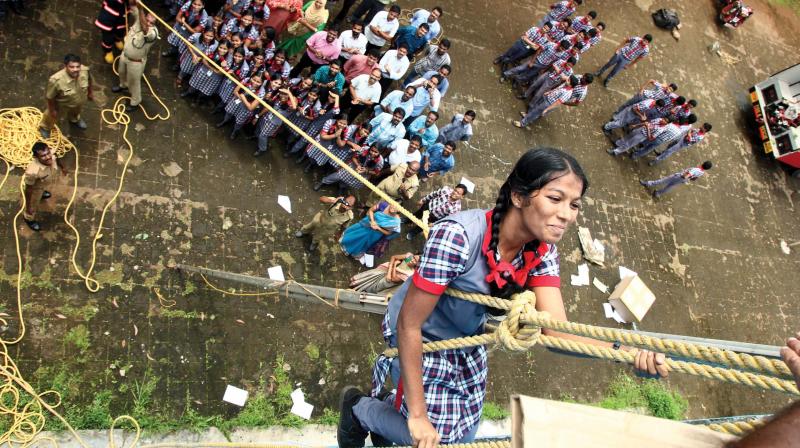Time schools taught lessons on disasters

KOZHIKODE: Disaster management is a much talked about now with the Cyclone Ockhi hitting Kerala coast and Lakshadweep catching us off guard. The list of calamities affecting children seems like endless, let it be those created by nature nor the human-made, from the negligence to the beast-like actions of man, proving our children are no longer safe at school.
Several questions like, do we have it as a subject in the curriculum, both CBSE and State?, whether our children who are trained as NCCs and SPCs got any training in disaster management or if it is not necessary to prepare them in such life-saving aspects so early, arises at this point.
But the reality is the Kerala board, or the national education boards do not have at least a chapter in any of their books nor a subject that speaks about the need for getting awareness on disaster management at a grassroots level and how it will help in the real-time situations.
“We took it granted that the school were always synonymous with the word safe. Unfortunately, it is no longer the case. Our notion of sending the children to schools is to get proper education that they deserve and for quite some time safety of the children were not a concern for us as schools were considered a safe zone,” said district collector U.V. Jose who is also the chairman of the Disaster Management Authority in Kozhikode.
"But time has changed, and the increasing atrocities both human-made and natural have taken us to a point to rethink if the children are safe at schools or after they leave home. Hence at the school level itself to learn about disaster management is very crucial."
The district administration in its level will hold workshops for students in disaster management as they can help their parents or the elder ones understand its importance.
"These kinds of studies will inject easily into the minds of kids," he added.
An official at the disaster management cell, P. Sadasivan Nair, said, it meant a continuous and integrated process of planning, coordinating and implementing measures necessary or expedient.
"It includes prevention of danger or threat, mitigation or reduction of risks or severity or consequences, capacity-building, preparedness to deal with it, prompt response, assessing the severity or magnitude of effects, evacuation, rescue, and relief; rehabilitation and reconstruction," he said.
"In the present scenario, a study on disaster management at school or college level is lacking in the education system. There were several discussions, but no actions followed. Our department can only create awareness, but the rest is with the government."
According to the National Disaster Management Authority, there are structural and non-structural interventions to ensure the safety of the children in schools or outside.
As per the structural response, strict check on the guidelines should be followed by the schools, while the non- structural intervention would be educating the staff, teachers and students about disaster management.
In spite of the Union government insisting on safety programmes targeting the educational institutions, emergency officials, teachers and students, the government is yet to implement such a system here.
Some of the suggestions put forward for educating the children on disaster management is building awareness by campaigns, mock drills for fire disasters and earthquakes, first aid training, a clear picture of command and control so that in case of an emergency there is no chaos, and use of fire extinguisher.

